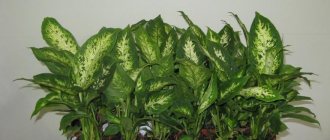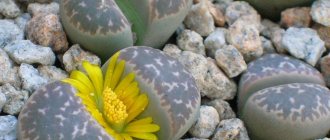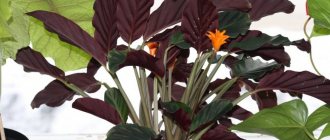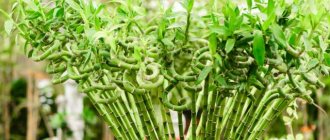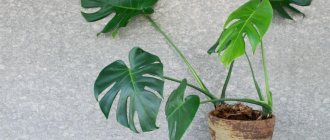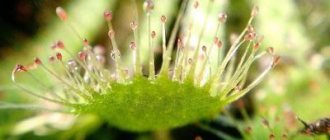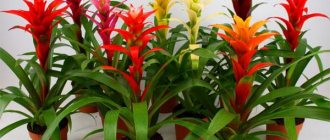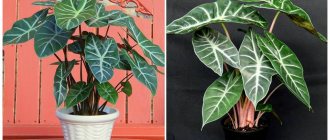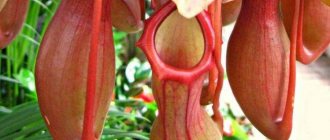Poinsettia (poinsettia) is an amazingly beautiful indoor plant that has captivated flower growers with its unusual bracts of bright colors, similar to stars. Blooms in winter, on New Year's holidays and Christmas. Blooming poinsettia is still an exotic, but very stylish addition to the traditional Christmas tree, garlands and gift wrappings in Russia. In Europe, the plant is most often thrown away after the holidays, not wanting to spend time and effort throughout the year trying to make it bloom again. But if you know the simple rules for caring for poinsettia at home and follow them exactly, the flower will delight you for many years.
Poinsettia propagation at home
At home, poinsettia is propagated only by cuttings.
At home, it is not possible to ensure that the plant propagates by seeds. Therefore, the flower is planted using cuttings. They are obtained from shoots pruned at the end of spring (the cut should be at an angle). Their length should not exceed 7-10 cm. At the same time, make sure that the cuttings have at least 4 or 6 large buds.
The resulting cuttings are freed from poisonous juice. To do this, they are placed in warm water for 25-35 minutes. Then the sections are treated with a special agent that stimulates the formation of roots. Prepare soil in containers, which should consist of the following components:
- sand;
- dry manure;
- humus.
The soil should be well moistened. Having planted the cuttings in it, the container is placed in a bright place (not directly in the sun), covered with film and kept at a temperature of 24 °C to 28 °C. In order not to provoke mold in the soil, it is periodically ventilated by lifting the protective polyethylene. Every 3-4 days it is carefully watered or sprayed with a sprinkler.
A month after the cuttings have completely rooted, they are freed from the film and allowed to remain at temperatures up to 16 °C. In September-October, young flowers are planted in pots, the diameter of which should be 20 cm. Such a plant will be able to bloom only after a year.
Reproduction
After pruning, you will have petioles for propagation. The secret to successful rooting is processing the cut site. The milky sap that the plant secretes prevents it from taking root. After trimming the plant, the resulting petiole should be further shortened to 6-8 cm, the excess leaves should be torn off and placed in warm water to release the milky juice. Afterwards, let the cut area dry and treat it with activated carbon. The cuttings are rooted in soil (loose soil with coarse sand) in a small pot. Place the container with the cuttings in a bag until rooting. Regularly moisten the soil and maintain a warm room temperature.
Feature: does not tolerate drafts or contact of leaves with a cold window. The plant is poisonous.
Join our Facebook group
Diseases and pests
Areca palm chrysalidocarpus - care at home
Plants, like people, get sick quite often, and they can also be greatly disturbed by various insects that try to suck all the vitality out of them. Poinsettias are bothered by spider mites, mealybugs, scale insects, whiteflies, and thrips.
Mealybugs, for example, leave behind telltale signs of their presence. A white substance appears on the plant, somewhat reminiscent of wax. By special signs you can identify aphids and whiteflies. They leave white sticky spots on the surface of leaves and bracts. There are many folk remedies to combat them, and stores also sell special preparations for treating plants.
Aphids and scale insects are afraid of soapy water. Therefore, it is recommended to wipe the leaves on both sides every week. After some time, the solution is washed off with a shower. Scale insects can be killed by using mineral oil for treatment. But traditional methods are not always effective.
As for diseases, there are only three diseases that most often affect poinsettias: gray rot, powdery mildew and fusarium. Gray rot is very easy to notice, since it appears on leaves, flowers and shoots in the form of a coating of gray mold. Brown spots appear on the leaves. The reason for its occurrence is increased air humidity. There is a long-proven remedy - “Fundazol”, which instantly rids the plant of this disease.
Next, you should pay attention to fusarium. It manifests itself especially well on shoots that first become brown, then turn black and die completely.
Powdery mildew, which, like fusarium, is a fungal disease, manifests itself in the form of a white coating that covers not only the shoots, but also all other parts of the plant. Under such a coating the plant begins to turn brown. The most effective means of combating these fungi are the drugs “Topaz” and “Fitosporin-M”.
Purchase and adaptation
Usually poinsettia is bought in winter, on the eve of the New Year holidays. The store where the purchase is made must be heated, since at temperatures below +15°C the flower may freeze. It should be carefully examined to ensure there are no signs of disease or pest damage (rotting or curled leaves, brown spots on the foliage, etc.).
Pay attention to the soil - it should not be wet, as the plant does not tolerate waterlogging, and such a condition may indicate improper care. You should opt for a specimen with unopened buds - after flowering, poinsettia sheds its beautiful perianths.
After purchasing, you should take care that the flower does not freeze or get damaged during transportation home. It is recommended to transport it in a box or wrap it in a thick layer of paper, placing it in a fairly spacious bag. Upon arrival, the flower is immediately carefully unpacked and placed in a warm and well-lit place. At home, it is important to provide optimal care for poinsettias and not move them unnecessarily. The main measures are moderate watering, fertilizing and spraying. It is important to ensure that the place where the flower grows is not drafty, the temperature does not fall below +16°C, and its leaves do not come into contact with cold window panes.
We recommend that you familiarize yourself with other types of milkweed: triangular, ribbed, tirucalli, Mil.
The plant gets used to new conditions in 3–4 weeks. For better adaptation, it is recommended to spray it 1-2 times with Epin (2-3 drops of stimulant per glass of water), leaving an interval of 10 days between these procedures. If you find spots on the leaves, it is better to treat with Fundazol. For a beginner, you should always quarantine first - keep it separate from other indoor plants.
Replanting poinsettia
Cordyline flower care at home
Replanting is required after flowering ends. The plant requires fresh soil and more space. The best time for transplantation is the spring months - March, April, May. After flowering, the poinsettia is cut short (more on this below) and transplanted into a looser pot.
Gardening stores sell special soil mixtures for milkweeds; it is best to use them. The composition of the soil includes: leaf soil (2 parts), clay turf (3 parts), peat (1 part), sand (1 part). To ensure excellent absorption and remove excess water, it is necessary to place an expanded clay layer on the bottom of the pot. The container for transplantation is small, slightly looser than the previous one.
How to properly prune poinsettia photo
During replanting, the plant may be injured; it is better to replant it together with a lump of earth using the transshipment method, trying to maintain the integrity of the root system.
What to do to prevent various problems?
For prevention, you need to monitor the condition of the plant and the soil:
- inspect the roots during transplantation;
- observe the appearance of foliage and the regularity of flowering;
- Regularly fertilize the soil and monitor its moisture.
Attention. Problems arise from improper care: once it is normalized, the plant will return to its healthy state and appearance.
Red poinsettia is a real star, burning brightly in winter. It does not require floriculture skills: it is enough to create the necessary conditions once and sometimes carry out the appropriate manipulations (watering, fertilizing, pruning, replanting). For this alone the flower will be grateful and will be able to please the owner for several years.
Growing poinsettia
Watering poinsettia
Oleander flower - home care
The poinsettia should be watered quite generously, especially in the summer, as the soil in the pot dries out. If a poinsettia wilts, this usually indicates a lack of moisture, but the plant also does not tolerate overwatering. It should be remembered: during the dormant period, poinsettia requires almost no watering.
Fertilizer and feeding
Poinsettia should be fertilized and fed at the end of the dormant period so that the plant gains enough strength for the upcoming flowering
In this case, you can use any organic and mineral fertilizers intended for flowering plants, but in September - October, before preparing the plant for flowering, special attention should be paid to phosphorus and potassium additives. Feeding can be done once every two weeks
Important! A newly transplanted plant cannot be fertilized! It should be watered with water without any additives for at least a month.
Poinsettia formation
In order for the plant to quickly form a magnificent bush, after flowering it is transplanted into a larger pot and not pruned. However, there is a nuance: while actively growing, poinsettia will never bloom again with this method of transplantation. Therefore, before the dormant period begins, it is still necessary to prune the poinsettia.
The second stage of formation begins the moment the poinsettia emerges from hibernation. As soon as new shoots appear on the plant, it is inspected and 4-5 of the strongest shoots are selected, the rest are cut off with a sharp knife.
As a result, the plant forms a beautiful and lush, but at the same time neat crown, giving the flower a decorative appearance.
Poinsettia after flowering
After the New Year, unfortunately, you can see in abundance in trash cans not only discarded Christmas trees, but also pots with dried up poinsettias. You can, of course, treat this plant as a disposable element of the New Year holidays, buying a new specimen each time, but this is hardly humane and productive.
You shouldn’t be upset that the poinsettia has faded, it’s just important to know what to do so that by next winter it will look like a Christmas star again. After flowering, poinsettia enters the resting phase necessary for the plant.
It does not last long - only a couple of months. Before hibernation, poinsettia usually sheds its leaves - this is not a sign of disease and not a reason to panic
After flowering, poinsettia enters the resting phase necessary for the plant. It does not last long - only a couple of months. Before hibernation, poinsettia usually sheds its leaves.
– this is not a sign of illness and not a reason to panic.
The plant should be pruned, leaving a few strong shoots (cut shoots can be used as cuttings for propagation).
The flower itself should be placed in a cool, dry place, protected from direct sunlight. During this period, watering the plants is reduced to a minimum.
After the dormant phase, poinsettias begin a period of growth. The plant is watered abundantly and carefully transferred to a new pot (slightly larger than the previous one). Now the poinsettia needs full care - watering and regular feeding.
Darkness
September is a very important period of preparation for flowering. The secret to its flowering is 14 hours of pitch darkness and 10 hours of intense light over 6-8 weeks. Every day in the evening, cover the plants with a bag that does not let in light or place them in a closet that you use least. During the period of bud formation, even the slightest illumination from a lantern in a window or a beam of light from the next room is harmful to the plant. At 10 hours of daylight, move the flower to the brightest place. The more light, the richer the color of the flowers. Watering should be reduced. When the first flowers appear, the plant can be switched to normal mode and artificial darkening can be stopped. In parallel with the formation of inflorescences, the stipules will be painted in their varietal color.
History of the Christmas star flower
The beautiful Christmas flower, poinsettia, has quite a long history. The first connoisseurs of this plant were the Aztecs, who called this flower cuetlaxochitl. From its red flower beds they obtained a natural dye for fabrics and cosmetics, and they used the white juice of the plant to treat fever.
The population of America saw the most beautiful spurge with the help of botanist and doctor J.R. Poinsett (1778-1852). He served as the first US Ambassador to Mexico at the direction of President Madison. Poinsett's greatest passion was plants and botany. Having first seen milkweed in Mexico in 1827, Poinsett immediately sent specimens to his greenhouse in Greenville, where he then began propagating the plant and sending specimens to various botanical gardens. In 1831, this flower came into commercial production and quickly became popular under the name poinsettia (translated into Russian, the name stuck as poinsettia). The tradition of buying poinsettia for Christmas has moved from the States to Europe.
Photo gallery
Poinsettia blooms in winter with small yellowish flowers grouped into rosettes. When flowering, deep red bracts form around them, giving the plant an unusually decorative appearance. Varieties with pink, cream, white and two-color colors have now been developed.
The plant bears three-lobed fruits containing three single-seeded nuts.
Did you know? Poinsettia has other names - the most beautiful spurge, Christmas star, Euphorbia pulcherrima, Star of Bethlehem. Named after Joel Poinsett, the American minister and ambassador to Mexico, who brought this Mexican plant to the United States and grew it in a greenhouse.
Care
Poinsettia care should also be special. The flower does not like mistakes. Follow the rules of caring for milkweed, and your efforts will be rewarded with beautiful blooms in winter.
Watering
During the growing season, poinsettia should be watered with settled tap water whenever the earthen ball becomes dry. If the soil is dry, you will know this by the ringing echo of the pot when you knock on it with your knuckles. If the echo is dull, watering should be postponed for another 2-3 days.
You need to water so that the earthen ball is well moistened, but the tray does not fill with water. Then the risk of developing diseases will be minimal. In spring and summer, it is advisable to spray the plant once a week. If dust accumulates on the sheets, wipe them with a soft sponge dipped in water.
During the dormant period (February and March), watering is stopped. Only light moistening of the soil is allowed so that the earth does not turn into a “brick”.
Top dressing
To form a beautiful bush crown and abundant flowering, poinsettia is fed once every 2 weeks throughout the growing season. The first feeding falls on the 22nd day after flower transplantation.
From May to October, spurge needs complex mineral supplements. You can alternate mineral fertilizers with organic ones. For example: the first feeding was organic, then after 2 weeks it should be mineral.
Zdraven for indoor flowers, Bona Forte and others are suitable as complex mineral fertilizers. Take 1 g of fertilizer per 1 liter and soak the earthen ball with the resulting solution. Nitrogen-rich materials can be used as organic fertilizers. To do this, you can put a little humus or compost in the pot.
Advice! During the flowering period, feed your poinsettia with fertilizers high in potassium. This mineral is found in large quantities in mixtures specially formulated for flowering plants.
Loosening, mulching
The soil in the pot must be loosened periodically to ensure air flow deep into the pot. There is no need to mulch poinsettia, since favorable conditions for the development of pathogenic microflora will form under the mulch layer.
Trimming
The most beautiful poinsettia requires annual formation of the bush. You need to prune in the spring, when the plant awakens (late March or early April). It is taken out of the shelter and the shoots are shortened by 1/3 to stimulate the growth of lateral branches. Shoots that are dry, weak and diseased are removed completely.
Important! Euphorbia produces milk at the cut site. It's very poisonous
Therefore, you only need to work with the plant wearing rubber gloves. In case of contact with the skin and mucous membrane of the eyes, burns are possible. Do not ingest milk to prevent severe poisoning.
Transfer
The Christmas Star needs an annual transplant. It is produced when, after pruning, the plant forms new shoots. The pot for replanting should be 1-1.5 cm larger than the previous one. But the composition of the soil should remain the same. Don't forget about drainage.
How to trim and replant a flower
Replanting poinsettias of any age is an annual procedure, since the flower grows quite quickly. In early spring, about a third of the length of each shoot of a faded plant is cut off, leaving 3–5 growth buds. Place the flower in a warm place and provide sufficient watering. Poinsettias can be replanted when new leaves appear. This usually occurs in April or May.
Immediately before transplanting, poinsettia looks like this
Preparing the soil, choosing the optimal pot
A very large pot of poinsettia is not needed. Preference is given to a container 2–3 cm larger in diameter than the previous one, with a large drainage hole, made of unglazed ceramics. Air penetrates into the pot through the pores, and aeration (ventilation) of the roots is an effective way to prevent rot.
When choosing a pot for poinsettia, give preference to a simple ceramic container.
The flower prefers a slightly acidic substrate (pH - about 6). A special soil for Euphorbiaceae is suitable. If you couldn’t buy one, it’s easy to mix the soil yourself:
- dense clay turf, leaf soil, peat chips, coarse river sand (3:2:1:1);
- universal soil for flowering indoor plants, powdered dry manure, sand (2:1:1);
- leaf humus, peat, perlite or vermiculite (3:2:2).
Transplant procedure
- Provide the flower with good drainage by pouring a layer of expanded clay or material with similar properties at least 3 cm thick on the bottom of the new pot.
- Fill about a third of the pot's volume with fresh substrate.
- Half an hour before the procedure, water the flower and remove it from the old container. If that doesn't work, gently tap the sides of the pot. Try to keep the earthen ball undestroyed.
- Inspect the roots as much as possible. Trim off any dry or damaged ones, especially those blackened by rot. Sprinkle the sections with sifted wood ash, activated carbon powder, colloidal sulfur, and powder with Kornevin.
- Place the flower in a new container, add substrate around the edges. To ensure even distribution, shake the pot several times. It is not advisable to compact the soil with your hands.
- Place the transplanted poinsettia in a warm place (20ºC or slightly higher), water it generously, and spray it daily.
- After new shoots appear, leave 5–6 of the strongest and best located ones, cut the rest as close to the ground as possible, without leaving “stumps”.
- Move the poinsettia to its old location and care for it as usual.
Poinsettia care at home
How to care for poinsettia? In practice, everything looks quite difficult. You will have to provide several conditions for this.
Plant placement
As mentioned above, poinsettia loves well-lit places, completely hidden from drafts.
In the summer it is better to take her out into the open air, this will only make her feel better.
If this is not possible, you can simply ventilate the room frequently (without creating a draft, of course).
If a plant receives little light in winter, it will easily shed its foliage.
Therefore, it is important to create additional light sources for it.
Temperature
The optimal and constant temperature for poinsettia is approximately 17-20 degrees. The lowest limit allowed during the flowering period is 14 degrees. During the rest period, the border can move up to -12 degrees. In general, the main thing that the plant does not like is sudden temperature fluctuations.
Particular attention should be paid to air humidity. Excessively dry air causes poinsettias to shed their leaves.
Spray the leaves with warm water as often as possible. This will not only lead to her feeling better, but will also get rid of spider mites.
Watering
In summer, the plant should be watered much more often than in winter, when it has faded.
It is extremely important not to use cold tap water when doing this. And prevent excessive moisture formation in the soil
And avoid excessive formation of moisture in the soil.
Otherwise, the roots can easily rot. It is optimal if the soil is of average moisture.
Top dressing
Poinsettias require fertilizing with mineral fertilizers every two weeks from spring to autumn. In summer it is also necessary to feed with a composition of mineral fertilizer plus mullein solution.
During flowering, mineral fertilizers are not applied. It is enough to use potassium fertilizer.
Transfer
In the spring of every year, the most beautiful poinsettia needs to be replanted. Around March, the stems need to be cut by a third and left in a warm room.
It is important that the sun's rays get there. Water with warm water
And after the leaves appear, you should immediately transplant the flower into a pot one size larger than the last one. After transplantation, the room temperature should be maintained at an optimal 20 degrees. Water and spray the poinsettia regularly with warm water.
After the shoots appear, leave only five or six of the strongest ones. The remaining shoots are removed and can be used as cuttings for further propagation.
Trimming
Since poinsettia grows quite quickly, it needs to be pruned after flowering. To prevent excessively large sizes. The poinsettia flower is trimmed, leaving it about 10 cm tall from the ground.
Next you just need to correct its crown.
Reproduction
Poinsettia propagation occurs by cuttings in the spring and summer.
Since there is milky sap inside the plant, the cuttings must first be placed in warm water to drain.
After this, take them out, dry them and root them in soil consisting of a mixture of peat and sand.
Two-liter pots are perfect for planting cuttings, each of which can hold two cuttings.
Advice! Many people advise dipping poinsettia cuttings in root to speed up growth. If you also want to speed up the process, you can take advantage of this experience.
Poinsettia cuttings should be buried no more than 1 cm to prevent rotting. The temperature is elevated, the approximate range is 24-28 degrees. Also, containers with cuttings will require regular ventilation and spraying.
Poinsettia after flowering
After the flowering phase, poinsettia inevitably begins a period of dormancy.
March-April the beauty does not bloom at all; green leaves appear entirely on top of the bracts. Even during such a period, she requires attention:
- Place it in a shaded place where it will be cool (12-15 degrees)
- Do the trimming. Shoots 10 cm high will be enough
- Reduce watering to a minimum. You can even let the soil dry out a little from watering to watering.
The flower will remain in this state for about one and a half to two months.
In fact, caring for a capricious poinsettia is not so difficult. The main thing is to observe favorable conditions for it.
Having done everything correctly, you will increase its decorative ability several times, and a pot of dense green vegetation with bright flowers will become the object of everyone's attention and admiration.
Description of the red Poinsettia flower
Poinsettia cannot be called a completely unpretentious plant - this beauty has a capricious and uncooperative character, but you can find an approach to it if you create the necessary conditions. The bright leaves (mostly red) that appear on the tops of the stems of this plant from the spurge family are mistakenly considered by many to be flowers, although poinsettia blooms rather inconspicuously.
The Christmas star, as poinsettia is popularly called, is perceived by some as a temporary guest on the windowsill, but not because this plant dies soon after purchase, but because the poinsettia no longer wants to “bloom” with its unusual colorful leaves next season. And this happens due to non-compliance with the light regime, or due to the lack of a rest period. So, in order for this Mexican beauty to delight you with her elegant appearance for a long time, try to “make friends” with her, and she will surely reciprocate your feelings.
At the moment, on the shelves of flower shops you can find poinsettia not only with red leaves, but also with pink and yellow ones - the care for different varieties is no different, so choose the color to your liking. Also, often, out of a desire to give the plant as much of a “New Year’s” look as possible, it is sprinkled with glitter, and this leads to the fact that the purchased flower quickly loses its decorative effect due to spots appearing on the leaves.
Poinsettia care
After the chosen poinsettia is delivered home, it needs to find a suitable place. You can place the flower on the windowsill, but it must be warm enough. If the window sill is cold, then the flower pot must be placed on a stand. Heat sources should also be kept as far away as possible. It is not worth changing the location of the flower; poinsettia does not tolerate changing places. If the poinsettia grows well where it is placed, then that is where it should stand. The Christmas star is extremely finicky, and to achieve good growth and flowering, you need to work hard. To do this, you need to follow certain recommendations.
Temperature Requirements
The plant is considered very heat-loving; the Christmas bush prefers temperatures from +18 to +25 degrees. The plant does not like temperatures above 25 degrees and does not tolerate it well. In winter, a flower standing on a windowsill should not touch cold glass, otherwise the leaves will be damaged. A temperature of about 5 degrees Celsius is destructive for a flower, so you should avoid keeping the plant in such conditions, even for a short time.
Lighting
This fastidious flower is as demanding of lighting as it is of temperature. Poinsettias require strict adherence to the alternation of day and night. But this is not easy to do at home. Additional light in the room can be created by lamps, a TV, and so on. Therefore, it is better to place the plant on the windowsill and hang thick curtains. When it gets dark outside, the curtains need to be drawn so that the poinsettia remains in the dark.
Soil and air humidity regime
Poinsettias kept at home require moist air. Winter is the height of the heating season and indoor air becomes drier. In this case, the plant must be sprayed regularly and a tray with wet drainage placed near it. An optimal level of humidity is also a preventive measure for the appearance of spider mites. Watering should be plentiful both in winter and summer.
The watering regime should be such that the soil does not have time to dry out completely. The flower pot should stand in a tray and an hour after watering, the water accumulated in it should be poured out. Water for poinsettia should be left to stand for several days, and the temperature should be close to room temperature.
Fertilizers
It is necessary to feed the plant in spring and summer, when the flower is actively growing. For this purpose, complex mineral fertilizers are used. During the flowering phase, potassium fertilizers are used.
Pests
If the air at home is too dry, there is a high probability of spider mites appearing. Another insect that causes great harm is the scale insect. The pest looks like a small plaque. Scale insects sit firmly on the leaf, so it is better to remove them by carefully scraping them from the leaves. And then wipe the plant with soapy water or a cotton swab dipped in alcohol. You can use chemicals - actara, actellik and others.
Signs and superstitions
There are many folk signs associated with the indoor poinsettia flower. So, if a flower withers, then there is a bad relationship in the family. The flower subtly senses any negativity - quarrels, resentments, pain.
If the Christmas star turned yellow as soon as it was purchased and brought into the house, then this indicates that there is an evil eye or damage in the house.
Did you know? If the cat shows increased interest in the poinsettia (starts to tear off leaves, tries to push the pot off the windowsill), then the flower must be moved to another room. It is believed that by influencing pets in this way, the Christmas star is trying to move and help a family member who needs support.
This indoor flower blooms beautifully for the Christmas holidays. Therefore, putting it on the table for the New Year is considered a sign leading to harmony and happiness in family relationships. If you place a pot with this flower in the bedroom of a young couple, it will relieve the husband of jealousy, and will help the wife to get pregnant and give birth to a child in the near future.
Thus, by creating optimal conditions for poinsettia and properly caring for it, you can admire its beautiful blooms during Christmas for many years.
How to store poinsettia after purchase
This beautiful plant can be given not only for Christmas, but also for other events. Very often, after flowering, many people throw it away, since caring for the most beautiful poinsettia at home is not very easy. But if the care is correct, it will delight its owners with more and more flowers. Although it is considered capricious, if you keep the plant warm and water it, it will not die, it will only lose a little of its thickness, and the leaves will still be bright. The western, eastern and southern sides of the window sill are best suited.
It is advisable to protect the plant from direct sunlight; diffused light will be needed. Leaves should not come into contact with cold windows in winter. It must be transplanted into another pot, changing the soil in the spring.
Watering
Only moderate watering is needed; it is carried out when the top layer of soil begins to dry out, becoming slightly crusty. And to maintain the brightness of the leaves, so that they do not turn yellow and are preserved, it is necessary to spray the poinsettia 1-2 times a day with a spray bottle.
Fertilizers
For longer flowering, it is advisable to feed the plant with complex fertilizers for indoor plants.
Transfer
After purchasing a poinsettia, it takes 25-30 days to adapt to the conditions of the apartment. In order for it to continue flowering, it is better to replant it after a month, changing the substrate. For replanting, a universal soil is used, it is advisable to add vermiculite, and do not forget to put a drainage layer of expanded clay on the bottom.
Rest period
After the poinsettia fades, its stipules, that is, the lower leaves, will fall off. This means that the plant begins a dormant period. Many people think that the plant is dead and throw it away. But don't rush! It is during this period that it is necessary to clearly understand how to care for the most beautiful poinsettia at home in this condition.
You need to do some pruning, cut off the top of the head by half the length, leaving about 5-6 buds at the bottom. This is necessary for density, the growth of new stems, the plant will become more magnificent and the number of bright leaves will increase. The pot with poinsettia is placed in a shaded place, the temperature is reduced to 14C-15C, watered very rarely, 2 times a month, only slightly moistening the soil. The plant is kept this way for about 2 months. After this time, the pot is taken out and placed on a well-lit windowsill.
Selecting poinsettias in a store.
How to choose poinsettia in a store? It is better to give preference to large and medium-sized specimens. They are usually well leafed. Having a lot of green leaves is very important. Brightly colored bracts are beautiful, but they do not provide the plant with its main function - nutrition. They lack chlorophyll, and therefore photosynthesis is not possible. A plant with a small amount of green foliage, and even more so without it, is practically unable to survive in apartment conditions. Young (small) specimens, stimulated to flower, are very difficult to tolerate apartment conditions. If your goal is to decorate the room for the holiday and then throw it away, we recommend purchasing poinsettia shortly before the event. For real flower growers who are ready to grow this “sultry Mexican” for many years, we recommend buying the plant immediately after delivery to the store. The chances of success will be much higher.
How to propagate poinsettia
All flowering plants reproduce naturally by seeds. But, as you know, the formation of seeds requires either special conditions (wind) or pollinating insects. Therefore, under artificial conditions, many plants are propagated vegetatively. Poinsettia can be propagated by cuttings. To do this, at the beginning of summer, young shoots are cut into pieces 8-10 cm long. Each cutting should have several buds. The cut is made directly under the whorl (knot). The cuttings are immersed in warm water, cut side down, for a few minutes. This procedure gets rid of the poisonous milky sap and facilitates the root formation process. Cuttings can be placed in a special solution that accelerates root formation. Then the cuttings are planted in a prepared moist mixture consisting of sand fertilized with humus and rotted manure. Cuttings take root best at a temperature of 26-27ºС.
Transplanting milkweed
In about a month, the cuttings will begin to grow, but they will not be able to bloom until next year. After the growth of new plants begins, the temperature can be reduced slightly. But at temperatures below 16 ºС, growth will stop. The optimal temperature for plant growth is 20-24 ºС. At the beginning of autumn, young plants are pruned to form a beautiful bush shape and transplanted into separate pots with a diameter of 12-14 cm. Reproduction of the most beautiful milkweed is quite a difficult matter. In apartments it is not always possible to create conditions for the successful rooting of all cuttings. But if new “Christmas stars” grow from at least half of the cuttings, that’s already good.
What to do if the plant does not take root?
Sometimes it happens that the plant does not take root. Perhaps the root system was damaged during transplantation or putrefactive processes developed. If this happens, you need to repeat the steps again. Before transplanting, the root system should be dipped in Kornevin. It will help its development and improve rooting. If the plant cannot be revived, it is necessary to start planting from a cutting .
Poinsettia is a beautiful flower, but requires some care. You should be careful when working with it. Improper handling of the plant can cause irritation of the skin and mucous membranes.
When growing poinsettias, questions may arise, so we recommend that you familiarize yourself with our materials:
- What to do if your poinsettia gets sick and drops its leaves in December?
- When to prune poinsettia and how to do it correctly?
- Why doesn't poinsettia bloom and what to do?
Poinsettia home care: propagation, pruning, replanting, dormant period
Reproduction
At home, poinsettia can only be propagated vegetatively. In the spring, apical cuttings are cut (each of them should have 5 internodes - approximately 15 cm in length) and placed in warm water for 10-15 minutes. The milky juice released is dried with absorbent paper or cotton wool, and the sections are dusted with charcoal powder. Prepared cuttings are rooted in water or in a substrate made of equal parts of peat and sand. After this, the seedlings should be placed in a greenhouse or covered with a jar or bag. To accelerate the appearance of roots, stimulants are used - rootin, heteroauxin. The optimal temperature for rooting is +24-28ºС. Plantings are periodically moistened and ventilated. After about 3-4 weeks, roots appear and active growth begins. After 2 weeks after rooting, you can begin to fertilize the young plants. For better tillering, shoots are pinched above 5-6 leaves. This procedure is carried out regularly to give the bush a compact shape. To ensure uniform development of the crown, the pot with the plant must be rotated periodically. Grown seedlings are transferred into separate pots.
Trimming
In spring (March), poinsettia begins to actively grow new shoots. To prevent the spurge from stretching out and becoming bald, but to have a compact shape, formative pruning is carried out. Weak shoots are removed from the plant, the remaining strong stems are cut by 1/3. The cut parts are used for rooting. After this, the spurge is placed in a bright place to stimulate the growth of new shoots.
New shoots appear on pruned poinsettia
As soon as they grow to 10-12 cm, they are pinched. This procedure promotes tillering of the plant: the more branches it has, the more flowers it will produce later - poinsettia blooms only on new shoots.
Transfer
It is better to replant poinsettia in the spring, when new shoots grow after pruning. The new pot is taken a little larger than the previous one (if you insert it into each other, then the gap between them should be 1-1.5 cm). Pots must have drainage.
Rest period
Poinsettia has a pronounced dormant period. Its duration is 2 months. During this period, reduce watering, but without allowing the soil to dry out completely. The plant is kept at a temperature of +12-14°C.
Attention! When carrying out cuttings, you should be careful: poinsettia juice is poisonous and can cause irritation of the skin, gastrointestinal tract, and hay fever. Therefore, it is better to carry out all manipulations with milkweed with gloves.
Problems when growing a flower
Poinsettia breeders sometimes encounter problems not related to diseases or pests:
- Yellowing of foliage. Frequently watering a flower, at the minimum permissible temperature, can cause rotting of the roots. The bush becomes sick and the leaves turn yellow, indicating a problem. The flowerpot is moved to a warmer room, sand is poured into the tray to help remove moisture. If the leaves are yellow for more than a week, then it is advisable to transplant the bush into a smaller flowerpot, removing the affected roots.
- Leaf fall. If abscission occurs at the end of flowering, the poinsettia is preparing for dormancy. Also, leaf shedding will be observed due to insufficient watering, with a sharp temperature change. You should inspect the bush more carefully and correct any shortcomings.
- Lack of flowering. Omission of agrotechnical recommendations postpones flowering for an indefinite period. It is necessary to reconsider the care, check the temperature and light intensity.
Varieties of Christmas star. Benefits and harms
Growing poinsettia at home begins with choosing a variety. The table lists the main breeding species of the Christmas star, each of which can live in your home.
Table - Poinsettia varieties
| Variety | Peculiarities |
| Oak Leaf | — The first artificially bred variety; - petals resemble oak leaves in shape |
| Premium Red | — Classic poinsettia with bright red bracts; - the middle of the flower is yellow with a greenish tint; - pointed leaf shape |
| Cortez Burgundy | — The variety is dedicated to the Spanish conquistador Hernan Cortes, who conquered Mexico; - bracts of purple color |
| Cortez Red | — The apical leaves are of a deep scarlet color; - on the bracted leaves there are dark green veins |
| Premium Miro | — Leaves that are white at the edges and pink in the middle; - the shape of the colored leaves is crinkled |
| White Star | — The peduncle is dull green with a pearly tint; - champagne-colored bracts |
| Cortez Pink | — Pink leaves; - the closer the bract leaf is to the top, the softer and lighter its shade |
| Jingle Bells | — Bracts leaves are carmine-red in color with white fragments along the edges; — visual effect of snow on the leaves |
A distinctive feature of the Christmas star is its amenability to selective breeding. Those presented in the table are only a small fraction of all the bred poinsettia varieties that gardeners can enjoy today.
Joel Roberts Poinsett was the name of the man to whom poinsettia owes its popularity and name. In the 19th century, this congressman served as the United States Ambassador to Mexico. One day he sent a flower he liked to his homeland. And breeders and professional botanists immediately set about taming the beautiful southern woman.
Types of plants popular among amateur gardeners
“Natural” poinsettias, despite their abundance, are almost never found among gardeners. Their place is taken by selectively bred hybrids. Most often, plants are classified according to the shade of their bracts:
Red poinsettias are a classic option. A combination of red and bright green (same as the holly wreaths).
Photo gallery: red poinsettias
Angelica - classic red bracts, effectively contrasting with dark green leaves, the shade is bright, but not flashy (other varieties with bracts of the same tone - Sonora, Premium Red, Galactica, Prestige Maroon)
The Olympia variety has pale red bracts that are velvety to the touch, although the leaves themselves are smooth
The Cortez Fire hybrid has bracts that resemble flames, shimmering in shades of red-orange, Peterstar is very similar to it
The “trick” of the Red Diamond (and Freedom) variety is a very pure scarlet color
The hybrid Carousel Dark Red has corrugated bracts along the edges (this is a distinctive feature of the entire group of Carousel varieties)
From a distance, the blooming Winter Rose poinsettia can easily be confused with an old English rose variety - the bracts are round, with slightly turned-back edges
The Champion variety is distinguished by its unusual pale red bracts.
Jester Red poinsettia has bracts the color of fresh blood covered with veins of a darker, burgundy hue.
The Dark Red variety and the similar Freedom Coral have very dark bracts, almost like those of Baccarat roses.
The Harlequin Red variety is distinguished by the shape of its bracts - they are strongly corrugated parallel to the central vein, sharply pointed
Pink poinsettias have colors ranging from soft pastels to crimson and bright neon shades.
Photo gallery: pink plant varieties
Variety Maren, Pink Ribbon and some others - classic pink color
Poinsettia Freedom Pink - a very delicate, creamy pink shade
Hybrid Cortez Pink - unusual peach or salmon tone, depending on growing conditions Pink Ell variety very bright crimson bracts
Monet Twilight and similar Da Vinci - light and dark shades smoothly flow into each other, pinkish bracts seem to be sprinkled with flour
The Annette Hegg poinsetti has dark crimson bracts.
White poinsettias are not very popular compared to others, but no less impressive. They are even more elegant and graceful.
Photo gallery: white poinsettias
The Regina variety is characterized by the presence of clearly visible lettuce veins on a white background
Silverstar White - pure snow-white color of the bracts
Whitestar - white has a slight green tint
In the Freedom White hybrid (as well as Polar Bear, Infinity White), the bracts are silvery in artificial light
Cortez White and similar Sonora White - an unusual shade of ivory, slightly shimmering with mother-of-pearl
How to make poinsettia bloom for Christmas and New Year
Photo: https://pixabay.com/photos/poinsettia-flowers-blossom-bloom-4573631/
To wait for bright blooms for the winter holidays, you need to prepare the plant at the beginning of autumn. Again, pruning and pinching is carried out to increase the likelihood of the formation of healthy buds and beautiful bracts. But pruning alone won't do the trick.
To lay flower buds, the star of Bethlehem requires a shortened daylight hours - 9-10 hours. And for about 14-15 hours the plant should be in the dark or at least twilight. Otherwise, ordinary green leaves will form, rather than buds and bracts.
For 1.5-2 months, the flower is kept in a dark place or covered in the evening and at night with a box or dark bag. During the day, the plant should be provided with good lighting. The optimal temperature during this period is approximately 18-20 degrees Celsius.

